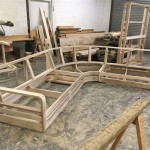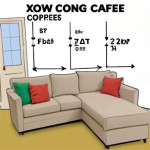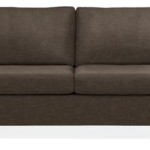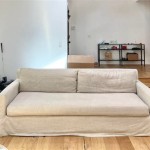Sofa, Table, Chair: Essential Furnishings for Living Spaces
The sofa, table, and chair form a fundamental triad in furnishing living spaces, offering comfort, functionality, and aesthetic appeal. Understanding the various types, materials, and considerations involved in selecting these pieces can significantly impact the overall ambiance and utility of a room.
Sofas: The sofa often serves as the centerpiece of a living room, providing a comfortable seating area for relaxation and social gatherings. Sofas come in various configurations, including sectionals, loveseats, and futons. Sectionals offer versatility with their modular design, allowing for customization and adaptation to different room layouts. Loveseats, smaller two-seat sofas, are ideal for compact spaces or as supplementary seating. Futons provide dual functionality, serving as both a sofa and a bed, making them practical for guest rooms or smaller apartments.
Sofa construction involves several key components impacting durability and comfort. The frame, typically made of wood, metal, or engineered wood, provides structural support. Cushions, filled with materials like foam, down feathers, or synthetic fibers, determine the sofa's comfort level. Upholstery, the fabric covering the sofa, influences its aesthetic and durability. Common upholstery materials include leather, microfiber, and various woven fabrics, each offering distinct characteristics in terms of appearance, maintenance, and longevity.
Tables: Tables play a crucial role in living spaces, providing surfaces for dining, working, and displaying decorative items. Different table types serve specific functions. Coffee tables, placed in front of sofas, offer a convenient surface for drinks and snacks. End tables, positioned beside sofas or chairs, provide space for lamps, books, and other personal items. Console tables, typically placed against a wall, offer a decorative surface for displaying artwork or mirrors. Dining tables, central to dining areas, provide a gathering space for meals.
Table construction varies depending on the type and style. Common materials include wood, metal, glass, and stone. Wood offers a classic and versatile aesthetic, while metal provides a modern and industrial look. Glass adds a touch of elegance and can create a sense of spaciousness. Stone offers durability and a natural aesthetic. The choice of material significantly influences the table's style, maintenance requirements, and overall lifespan.
Chairs: Chairs provide individual seating options and contribute to the overall comfort and style of a room. Different chair types cater to various needs and preferences. Armchairs, offering armrests and comfortable back support, are ideal for relaxing and reading. Dining chairs, designed for use with dining tables, prioritize comfort and posture during meals. Accent chairs, often featuring unique designs or vibrant colors, add visual interest and personality to a space. Office chairs, optimized for ergonomic support and functionality, are essential for workspaces within the home.
Chair construction involves several key elements impacting comfort and durability. The frame, similar to sofas, provides structural support and is often made of wood, metal, or plastic. The seat and back, typically cushioned with foam, down, or other materials, determine the chair's comfort level. Upholstery, like sofas, influences the chair's aesthetic and durability and can be made from a variety of fabrics or leather. Ergonomic considerations, particularly for office chairs, involve features like adjustable height, lumbar support, and armrests to promote proper posture and reduce strain during extended periods of sitting.
Selecting the right sofa, table, and chair combination involves careful consideration of several factors. Room size and layout play a crucial role in determining appropriate furniture dimensions and placement. The overall design style of the space influences material choices, color palettes, and furniture styles. Functionality requirements dictate the specific types of furniture needed, such as a dining table for a dedicated dining area or a comfortable armchair for a reading nook. Budget considerations also influence material choices and furniture quality.
Maintenance requirements vary depending on the materials used in the construction of sofas, tables, and chairs. Regular cleaning and care can significantly extend the lifespan of these furnishings. Wood furniture may require polishing or waxing, while upholstered pieces benefit from regular vacuuming and spot cleaning. Leather furniture needs specific cleaning products to maintain its suppleness and prevent cracking. Understanding the specific care instructions for each piece ensures its longevity and preserves its appearance.
The interplay between sofas, tables, and chairs contributes significantly to the overall ambiance and functionality of a living space. Careful consideration of material choices, styles, and placement creates a cohesive and comfortable environment that reflects individual preferences and meets the specific needs of the occupants.

Wooden Sofa Side Table Chair Arm Rest Rustic Stylish Useful Tray Wrap Wood Couch Tableside

4 Pc Patio Rattan Wicker Chair Sofa Table Set Outdoor Garden Furniture Kobe Kos Kool Stor Sets Chairs

Sofa Chair Table Full Set Ps Home Decor

14925 End Table Modern Chair Side Sofa Display Shelf Red Cocoa Features An Living Room Contemporary Tables

Mixing A Sofa With Tables And Chairs When How To Do It

Wooden Sofa Side Table Chair Arm Rest Rustic Stylish Useful Tray Wrap Wood Couch Tableside Denmark

Whole Market Modern Restaurant Metal Furniture Sofa Table Chair Set Dining Room China Home Made In Com

Gymax Multi Functional Kids Sofa Table Chair Set Couch Storage Box Furniture Bedroom Com

Premium Photo Boho Style Living Room With Wicker Chair Sofa Table And Pampas In The Pot On White Wall Background

Modern Card Seat Sofa Table And Chair Customized Coffee Restaurant Furniture China Made In Com
Related Posts








